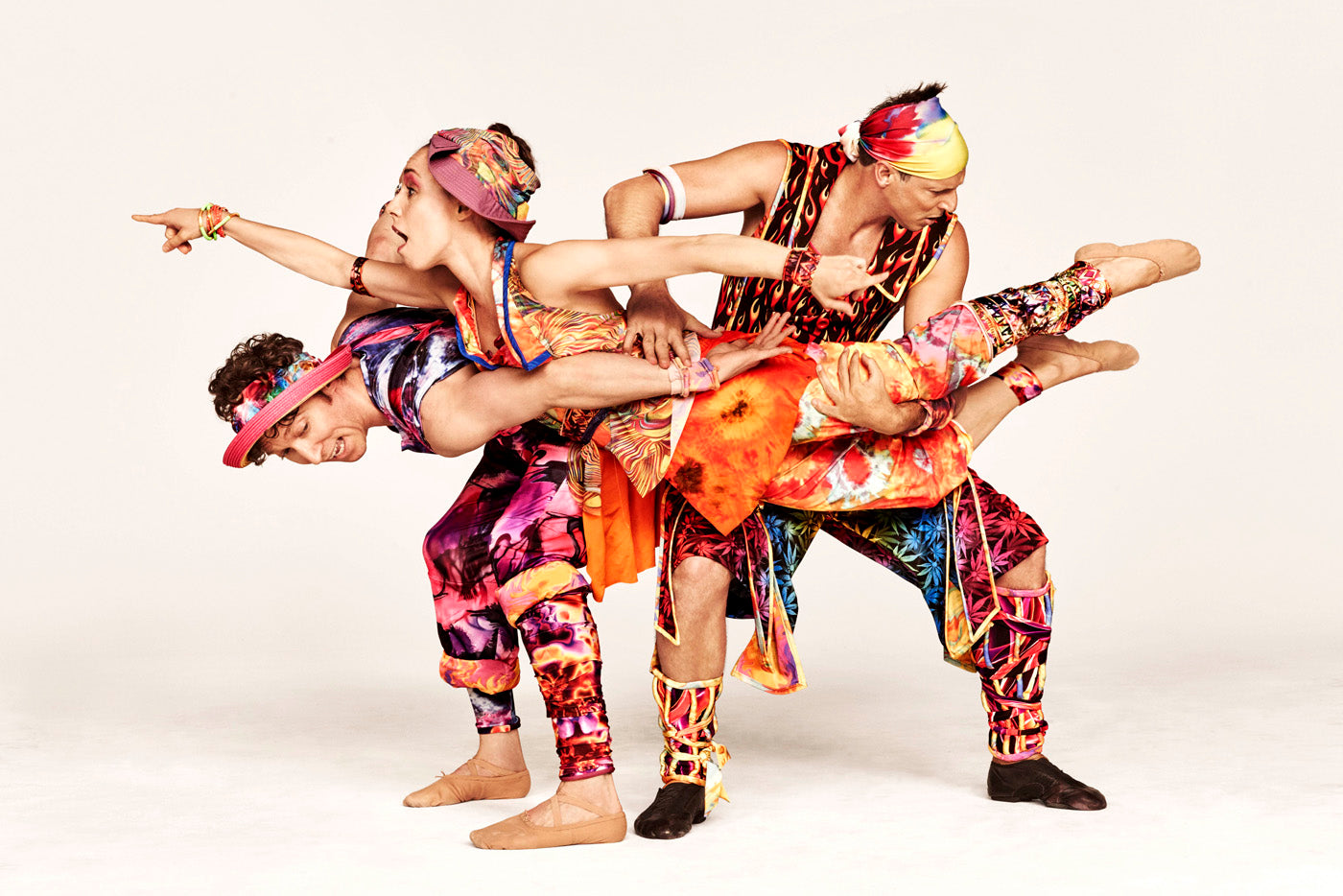With her signature style on view—balletic moves, whiplash turns, fancy lifts punctuated by extreme split leg motifs, as well as rubbery-limbed bodies able to leap tall buildings in a single bound—no wait, that’s Superman—Tharp has, nevertheless, managed to fashion nearly every move she ever conceived into a physically exhausting workout for dancers and audience alike.
Which isn’t to say there weren’t some highly enjoyable moments in the two-act evening.
After all, Tharp never met a medium for which she couldn’t choreograph, having notched more than 160 dances in her belt: Her history includes creating works for Hollywood (“Hair” and “Amadeus,” both Miloš Forman films first seen on stage), TV specials, Broadway (in addition to her 2002, long-running Tony-award winning musical, “Movin’ Out,” there was one noticeable flop, the Twyla Tharp meets Bob Dylan fiasco, “The Times They Are A-Changin'”), figure-skating routines (why not?), and full-length ballet commissions, beginning with her 1973 “Deuce Coupe,” a cross-over work set to songs by the Beach Boys for the Joffrey Ballet, which was—for better or worse—a precursor to the jukebox musical.
Needless to say, then, since Tharp’s first dance in 1965 staged in room 1604 at Hunter College, a five-minute affair with an audience of 10, the woman certainly has staying power.
As do some of her dancers, notably John Selya (he created Eddie in “Movin’ Out”), a Tharp dancer for more than two decades, Ron Todorowski, who appeared in all three of Tharp’s musicals, and the astonishing Rika Okamoto, a Graham dancer who first performed with Tharp in 1993 and could be the director’s double.
Other veterans include Matthew Dibble, having joined Twyla Tharp Dance in 2001 (it’s important to note that Tharp has not maintained an ongoing troupe, but recruits dancers on a project-to-project basis), and the married couple Eva Trapp and Nicholas Coppula, who performed Tharp works with Pittsburgh Ballet Theatre during their eight-year stint with that company.
In any case, all of the performers were in high Tharpian mode, with “Preludes and Fugues,” set to parts of Bach’s massive Well-Tempered Clavier (alas, heard on tape, as were all the works), featuring a spectrum of moves mostly deployed in duets, trios and solos. With the men in tan pants and puffy-sleeved shirts and the women in short dresses (costumed by Santo Loquasto), the vocabulary encompassed achingly slow adagios to bullet-train like allegros, the forward-looking brilliance of Bach sometimes in canonic competition with the dance.
Beginning with a couple in a ballroom nuzzle (Selya and Savannah Lowery, taking a leave from her soloist duties at New York City Ballet), this gambit harkens back to dances Tharp made to Sinatra songs. What followed was a dizzying array of idioms that included athleticized balancing, a steady flow of bourrées, wide-legged walks and even a nod to the iconic leap in Balanchine’s “Prodigal Son.”
No surprise here as Tharp, as prodigious with a pen as she is with steps, has been writing blogs for the New York Times in which she pointed out that sections of the Bach are tributes to masters who came before her, including Mr. B., Merce Cunningham, Jerome Robbins and Graham.
The overly long work at 45 minutes—in spite of some successful kinetic juxtapositions with the score—couldn’t save itself from monotony, a kind of marathon with busy footwork, an occasional clenched fist and even a silent scream. There was also attitude galore with the individual dancers, however, too often becoming a blur of motion. But bookended by Bach’s delicate Prelude in C, the piece, in its lovely finale, featured the dancers joining hands in a kind of neo-spiritual prayer circle.
Attitude certainly helped make “Yowzie,” a drunken, Vaudevillianesque spectacle and uproarious, slapstick-driven romp. Set to seven N’Awleans-style jazz standards performed by Henry Butler/Steven Bernstein and the Hot 9, this was Tharp let loose, with Loquasto’s inventive and wildly colorful costumes contributing to the boisterous goings-on. Here was a boozy Okamoto, being carried upside-down, walking knock-kneed and having a ball, no matter the contortions she had been asked to assume (and they were numerous).
Large doses of Paul Taylor (with whom Tharp danced ever so briefly), coursed through the work, her omnipresent gymnastic sensibility spot on. Images of Boardwalk Empire created (at least for this viewer), a longing for the good old days, with “Yowzie” able to provide a respite from reality with its plethora of antic highs.
Selya, rising on his sneakered toes, was clearly digging it, as were Dibble, Todorowski and crew, with booty-shaking, splashy kicks and sight gags (male splits and yogi-like headstands), the order of the night. This was feel good, sideshow-worthy stuff, danced by indefatigable performers unconstrained by any obstacle the outside world might toss their way.
In the end, Tharp’s way with the moving, dancing body, infused the audience with unbridled joy, despite the fact that the septuagenarian choreographer chose not to join her magnificent troupe onstage for a curtain call.




comments